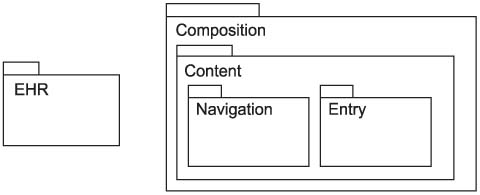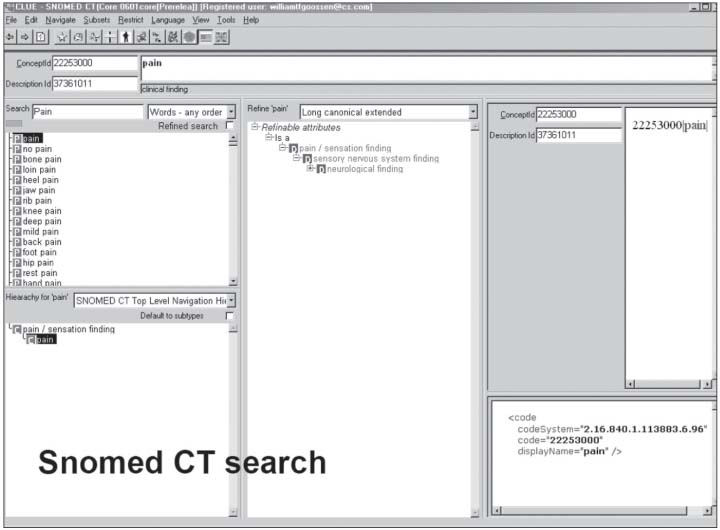Healthc Inform Res.
2010 Mar;16(1):1-5. 10.4258/hir.2010.16.1.1.
Review of Semantically Interoperable Electronic Health Records for Ubiquitous Healthcare
- Affiliations
-
- 1Deptartment of Nuclear Medicine, Gachon University Gil Hospital, Incheon, Korea.
- 2Convergence Future Technology Research Deptartment, Creative Research Laboratory, Electronics and Telecommunications Research Institute, Daejeon, Korea. kyoil@etri.re.kr
- 3Deptartment of Internal Medicine, Gachon University Gil Hospital, Incheon, Korea.
- KMID: 2166559
- DOI: http://doi.org/10.4258/hir.2010.16.1.1
Abstract
- In order to provide more effective and personalized healthcare services to patients and healthcare professionals, intelligent active knowledge management and reasoning systems with semantic interoperability are needed. Technological developments have changed ubiquitous healthcare making it more semantically interoperable and individual patient-based; however, there are also limitations to these methodologies. Based upon an extensive review of international literature, this paper describes two technological approaches to semantically interoperable electronic health records for ubiquitous healthcare data management: the ontology-based model and the information, or openEHR archetype model, and the link to standard terminologies such as SNOMED-CT.
MeSH Terms
Figure
Reference
-
1. Brown DG, Petitto KR. The status of ubiquitous computing. EDUCAUSE Review. 2003. 38:24–33.2. Weiser M. The computer for the 21st century. 1991. New York: Scientific American.3. Bott OJ, Ammenwerth E, Brigl B, Knaup P, Lang E, Pilgram R, Pfeifer B, Ruderich F, Wolff AC, Haux R, Kulikowski C. The challenge of ubiquitous computing in health care: technology, concepts and solutions. Methods Inf Med. 2005. 44:473–479.
Article4. Korhonen I, Parkka J, van Gils M. Health monitoring in the home of the future. IEEE Eng Med Biol Mag. 2003. 22:66–73.
Article5. Gouaux F, Chautemps LS, Fayn J, Adami S, Arzi M, Assanelli D, Forlini MC, Malossi C, Martinez A, Ohlsson M, Placide J, Ziliani GL, Rubel P. Pervasive self-care solutions in telecardiology: typical use cases from the EPI-MEDICS project. Stud Health Technol Inform. 2003. 95:119–124.6. Anliker U, Ward JA, Lukowicz P, Tröster G, Dolveck F, Baer M, Keita F, Schenker EB, Catarsi F, Coluccini L, Belardinelli A, Shklarski D, Alon M, Hirt E, Schmid R, Vuskovic M. AMON: a wearable multiparameter medical monitoring and alert system. IEEE Trans Inf Technol Biomed. 2004. 8:415–427.
Article7. Breslin S, Greskovich W, Turisco F. Wireless technology improves nursing workflow and communications. Comput Inform Nurs. 2004. 22:275–281.
Article8. Bång M, Larsson A, Eriksson H. NOSTOS: a paper-based ubiquitous computing healthcare environment to support data capture and collaboration. AMIA Annu Symp Proc. 2003:46–50.9. Favela J, Rodriguez M, Preciado A, Gonzalez VM. Integrating context-aware public displays into a mobile hospital information system. IEEE Trans Inf Technol Biomed. 2004. 8:279–286.
Article10. Beale T. Archetypes, constraint-based domain models for future-proof information systems [Internet]. 2002. cited 2010 Mar 19. Available from: http://www.openehr.org/publications/archetypes/archetypes_beale_oopsla_2002.pdf.11. Wikimedia Foundation Inc. OpenEHR [Internet]. cited 2010 Mar 19. Wikimedia Foundation Inc.;Available from: http://en.wikipedia.org/wiki/OpenEHR/.12. Gruber TR. A translation approach to portable ontology specifications. Knowledge Acquisition. 1993. 5:199–220.
Article13. Guarino N. Formal ontology in information systems. 1998. In : Proceedings of the 1st international conference; 1998 Jun 6-8; Trento, Italy. Amsterdam: IOS Press;3–15.14. Nirenburg S, Raskin V. Ontological semantics. 2004. Cambridge: The MIT Press.15. Calero C, Ruiz F, Piattini M. Ontologies for software engineering and software technology. 2006. Berlin: Springer.16. Kashyap V. The semantic web: semantics for data and services on the web. 2008. New York: Springer.17. Garde S, Knaup P, Hovenga EJ, Heard S. Towards semantic interoperability for electronic health records. Methods Inf Med. 2007. 46:332–343.
Article18. Weed LL. Medical records, medical education and patient care: the problem oriented medical record as a basic tool. 1969. Cleveland: Case Western Reserve University Press.19. Elstein S, Shulman LS, Sprafka SA. Medical problem solving: an analysis of clinical reasoning. 1978. Cambridge (MA): Harvard University Press.20. Bruun-Rasmussen M, Bernstein K, Vingtoft S, Nohr C, Andersen SK. Quality labeling and certification of electronic health record systems. Stud Health Technol Inform. 2005. 116:47–52.21. RICHE consortium. RICHE ESPRIT project: final report. 1992.22. Health Level Seven International. Reference information model (RIM) [Internet]. cited 2010 Mar 19. Ann Arbor (MI): Health Level Seven Internation;Available from: http://www.hl7.org.23. Gennari JH, Musen MA, Fergerson RW, Grosso WE, Crubézy M, Eriksson H, Noy NF, Tu SW. The evolution of Protégé: an environment for knowledge-based systems development. Int J Hum Comput Stud. 2003. 58:89–123.
Article24. Chaudhri VK, Farquhar A, Fikes R, Karp PD, Rice JP. OKBC: a programmatic foundation for knowledge base interoperability. 1998. In : Procceedings of the 15th National Conference on Artificial Intelligence (AAAI-98) and the Tenth Conference on Innovative Applications of Artificial Intelligence (IAAI-98); 1998 Jul 26-30; Madison, WI. Menlo Park (CA): AAI Press;889–896.25. Beale T, Heard S, Kalra D, Lloyd D. Reference Model, The openEHR EHR information model. 2006. Revision 5.0. The OpenEHR Foundation.26. Beale T, Heard S. The archetype definition language (ADL). 2006. Rev. 1.3.1. The OpenEHR Foundation.27. Beale T, Heard S. Archetype definitions and principles. 2005. Revision 0.6. The OpenEHR Foundation.28. Price C, Spackman K. SNOMED clinical terms. Br J Healthc Comput Inf Manag. 2000. 17:27–31.29. Spackman KA, Dionne R, Mays E, Weis J. Role grouping as an extension to the description logic of Ontylog, motivated by concept modeling in SNOMED. Proc AMIA Symp. 2002:712–716.30. Spackman KA, Campbell KE, Cote RA. SNOMED RT: a reference terminology for health care. Proc AMIA Annu Fall Symp. 1997:640–644.31. Dolin RH, Alschuler L, Boyer S, Beebe C, Behlen FM, Biron PV, Shabo Shvo A. HL7 clinical document architecture release 2. J Am Med Inform Assoc. 2006. 13:30–39.
Article
- Full Text Links
- Actions
-
Cited
- CITED
-
- Close
- Share
- Similar articles
-
- Electronic Health Record: Definition, Categories and Standards
- Development of Clinical Contents Model Markup Language for Electronic Health Records
- Leveraging Devices, Data and Discovery for Smarter Healthcare in Japan
- Current Status of Electronic Medical Record Systems in Hospitals and Clinics in Korea
- Availability of nursing data in an electronic nursing record system for a development of a risk assessment tool for pressure ulcers



